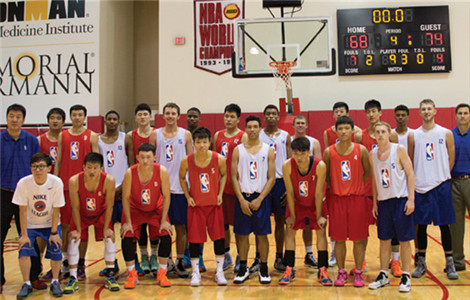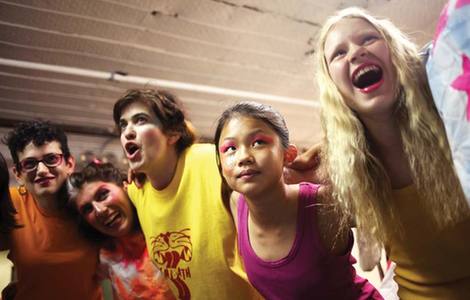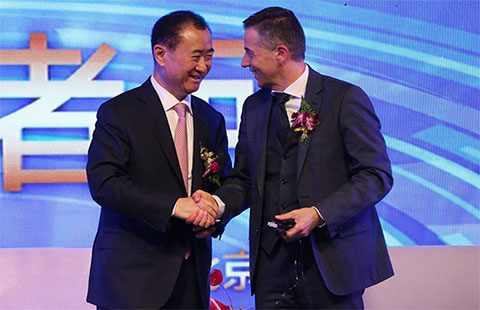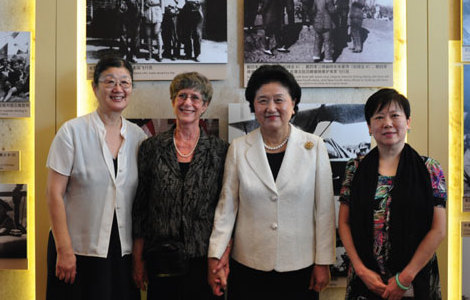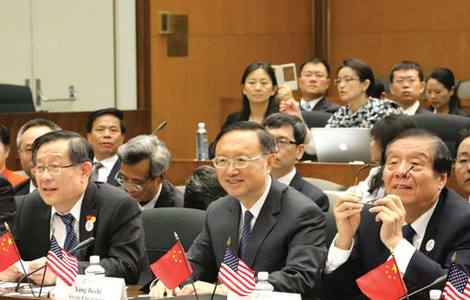BC uses virtual reality tech to woo tourists
Updated: 2015-06-26 03:03
By Li Jing(China Daily Canada)
|
|||||||||
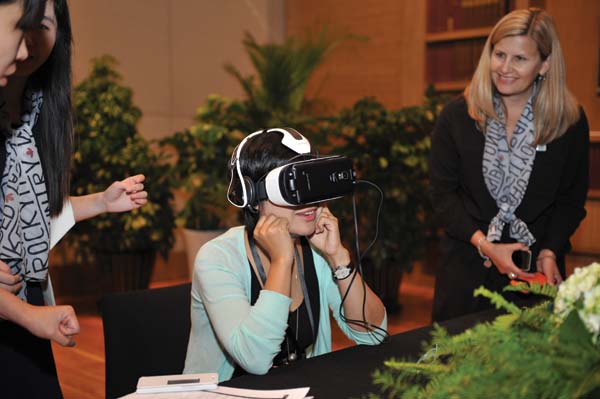 |
|
Destination British Columbia Tourism applied virtual reality techonology to promote the destination in China. [Photo by Li Jing / China Daily] |
It is as if hopping on a temporal shifter.
On a virtual reality tour from Destination British Columbia Tourism, a person can experience being on a boat, choosing your own adventures to embark on, from sea lion spotting along the shore to alpine hikes and strolls through the thick foliage of the coastal rainforest.
“It is really cool,” said Mary Anne Dehler, public diplomacy section counselor of the Embassy of Canada, after she tried the virtual reality headset for the first time. “When you are looking at things, you can actually do 360 and look around yourself. It is like you were flying or you were on a boat.”
The 4-minute virtual reality 3D video, titled The Wild Within Virtual Reality Experience, employing the world’s cutting-edging Oculus Rift and virtual reality technology to create an immersive experience, is the latest tool in the arsenal of Destination British Columbia Tourism to promote the western Canadian province worldwide.
After the launchings in Canada, the US, Germany and Australia, Destination BC visited Beijing on June 9 and invited travel trade partners and tour operators in China to take a virtual reality trip to their land.
“We hope to present BC’s raw wilderness to our Chinese travelers, travel trade and media partners in this new and immersive way,” said Marsha Walden, president and chief executive officer of Destination BC. “The virtual reality experience project is an essential part of our corporate strategy.”
The video was shot in BC's Great Bear Rainforest, with an investment of C$550,000 ($447,865). Over the course of five days in September, all footage was captured via seven high-definition GoPro cameras fixed to a spherical, 3D-printed rig. For some scenes, this rig was mounted on a hiker’s backpack, and in others it was hitched to an aerial drone. The technology, its creators say, allows them to capture a broad range of perspectives, including “altitude swings that take you from sea to sky; from rainforest to desert to snow-capped peaks”.
Although they don’t currently plan to shoot another one immediately as virtual reality headsets are not yet widely available to consumers, Walden said they are “watching those technological advances and if we find suddenly there is widespread availability we are likely to be investing more”.
Virtual reality technology is advancing rapidly. Several electronics companies are set to release virtual reality headsets in 2015, including Oculus VR, Samsung, and Sony. Headsets are expected to be widely available to consumers by 2016.
“Within five months, the headset device has developed from a heavy helmet to the size of glasses,” said Hu Ying, China marketing manager of Destination BC. “We are working with travel agencies in China to confirm Chinese consumers will be able to try the headsets and see video themselves in the stores of travel agencies.”
Destination BC is the first North American destination to use virtual reality video. “We want to be innovative marketers, because it is hard to stand apart,” she said.
Walden said tourism is a really competitive world and countries over the globe are competing for the attention of travel trade and visitors.
There’s a lot of interest in virtual reality technology in the tourism industry. Tourism operators such as Thomas Cook, South Africa tourism commission, and Marriot Hotels have used the virtual reality technology. Thomas Cook is currently using virtual reality in six concept stores in the UK and Germany.
Wang Suqi, president of Total Travel International Travel Service, said virtual reality technology is more captivating to really get consumers to think about what the destination would feel like than any other medium can create.
"This is the future. I can clearly picture using this for our clients. Looking a bit more into the future, I could see film modules of hotels, road takes, experiences, so we can present virtual trip proposals to our clients,” said David Kaiser from Art of Travel.
The shift to innovative technology is also driven by the change of consumers’ habits of travel planning. Long ago, much of the trip is in groups and now there is much more independent way of traveling, which seems to grow quickly. Young people in particular are more sensitive to technological innovations and innovative promotions.
“We are trying to adapt to the ways of how we talk to the travel trade and consumers,” said Maya Lange, vice president of global marketing of Destination BC.
Some worry that virtual reality devices like the Oculus Rift will have an antisocial effect on society, encouraging people to shut themselves indoors in favor of virtual worlds, but Walden said she was not at all worried about that.
“We are just giving you enough taste of experience that you really want to do it in a real way,” she said confidently.
For now the virtual reality headsets have not yet rolled out throughout the world, which has limited the audience access to it.
But Walden said headset would be not likely to be a bottleneck for the promotion of the video and technology. “We see other technology available on the Internet, giving opportunity for you to just use the phone to get virtual experience,” she said. “In the meantime, manufacturers are in a hurry to get the headsets into the market place and we’ll start seeing big rolling out very soon.”
Most Viewed
Editor's Picks

|

|

|

|

|

|
Today's Top News
China opposes US
defense bill
Key events in the history of
US gay rights
More people around world like China, survey finds
Victims of Charleston
massacre mourned
US police fatally shoot unarmed black man in domestic dispute
No rest until sweeping victory against drugs, President Xi says
Pundits cheer China-US talks
US Supreme Court upholds key Obamacare insurance subsidies
US Weekly

|

|
